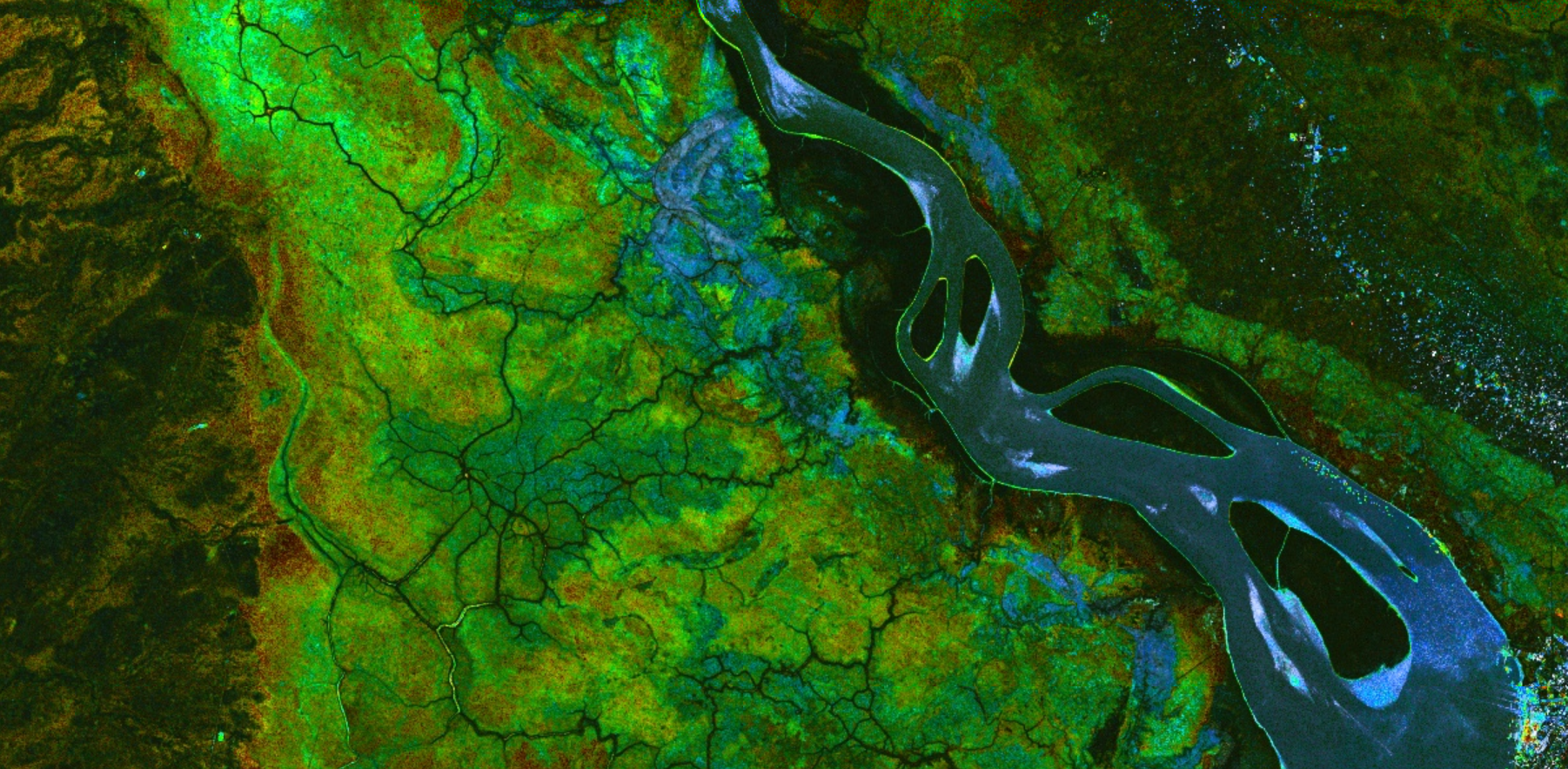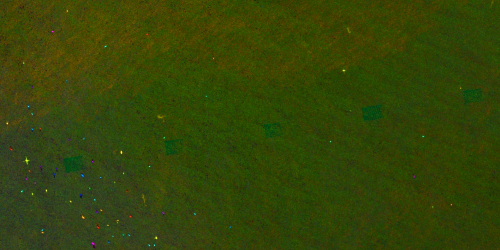
Polarimetry and SAR dynamical processes
- Project by: Elise Colin
- November 11, 2024
As a visiting scientist at the Science Hub, my research centers on advanced radar image analysis, with a particular focus on extracting dynamic information through speckle statistics and polarimetry.
My work explores the rich data within speckle patterns—both from individual radar images and across time series—to improve our understanding and interpretation of polarimetric radar signals.
Monitoring environmental and structural changes over time in Sentinel-1 Images
One of my main objectives is to further develop and promote change detection algorithms based on the statistical properties of speckle, enhanced by polarimetric information.
These methods show great promise in analyzing Sentinel-1 time series, where polarimetry has proven especially useful in identifying weak Radio Frequency Interference (RFI) signals that might otherwise go undetected. Polarimetric data appears to improve detection even when RFI signals are faint, thereby increasing the overall sensitivity and accuracy of these algorithms in capturing subtle changes or anomalies.

Classical change detection in a time series using the REACTIV algorithm, as proposed in [1]. “Anomalies” appear in saturated colors. Here, RFI signals are deeply embedded in the intensity of the sea clutter noise.

Proposed polarimetric anomaly detection based on the formalism recently developed in [2].
We clearly see RFI signals.
This work is done in collaboration with Thibault Taillade & al.
Monitoring movements induced by wind in a single Sentinel-1 Image
Beyond change detection, I am analyzing second-order statistical parameters of speckle to examine their sensitivity to movement during SAR image acquisition. This work is particularly relevant for studying dynamic phenomena such as the motion within cyclones. By analyzing Sentinel-1 imagery of tropical cyclones, I aim to determine whether these second-order speckle statistics can reveal valuable insights into storm dynamics, ultimately developing tools that capture and interpret motion information directly from SAR data.

Polarimetric colored composition on the left / Multivariate Polarimetric Coefficient of variation on the right from a Sentinel-1 Image of hurricane.
This work is done in collaboration with Arthur Avenas & al.
Polarimetric and temporal behaviors in full polarimetric time series at different wavelengths: SAOCOM (CONAE) and ISRO.
I am also investigating the extraction of temporal polarimetric parameters from radar time series, focusing on data from SAOCOM and ISRO’s radar satellites. These temporal polarimetric insights are potentially valuable for applications in soil moisture estimation, which is crucial for environmental and agricultural monitoring. In collaboration with Jean Bouchat, I am working on refining techniques to estimate soil moisture using radar time series from Sentinel-1, SAOCOM (Conae), and EOS-04 (ISRO). This effort could support a range of applications, from precision agriculture to climate-related studies, by turning polarimetric information into actionable environmental insights.
In addition, I am actively contributing to the development of strategies for the future of the radar community, particularly regarding the utilization of polarimetric data. This includes participation in discussions on the anticipated data needs and analytical methods required for the upcoming BIOMASS mission, which will play a crucial role in observing global forest biomass and improving our understanding of the carbon cycle.
This work is done in collaboration with Francesco Sarti et al.
Elise Colin
[1] Colin Koeniguer, Elise, and Jean-Marie Nicolas. “Change detection based on the coefficient of variation in SAR time-series of urban areas.” Remote Sensing 12.13 (2020): 2089.
[2] Colin, Elise, and Razvigor Ossikovski. “Towards a Unified Formalism of Multivariate Coefficients of Variation: Application to the Analysis of Polarimetric Speckle Time Series.” Journal of the Indian Society of Remote Sensing (2024): 1-12.

